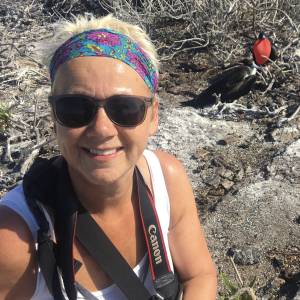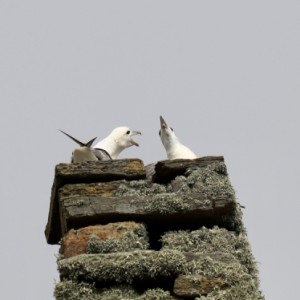Lost in time
The weather gods were kind to us yesterday, bestowing idyllic weather on our tour of Neolithic Orkney. Today however, is different; Kirkwall itself seems to have disappeared in the gloom, and as we drive towards Tingwall for our short crossing to Rousay, things improve only marginally.
Having recovered from the trauma of reversing onto the ferry, we survive the short crossing and drive into the mist-covered hills of the island, soon arriving at today’s destination.
The Westness coast on Rousay is considered to be the most important archeological area in Scotland. In fact, Rousay itself is referred to as The Egypt of the North, such is its wealth of treasures.
We make our way down the steep hillside to the shore, emerging from the clouds into a world of wonders. If anything, the weather only adds to the atmosphere of the incredible world we are about to encounter as we undertake a ‘walk from the dawn of time’ . The hyperbole is actually not too far from reality.
First, there is a broch from 200BC, built on the ocean’s edge where currents race at frightening speed. Then there is Midhowe chambered cairn dating back some 5,000 years - a communal burial chamber known as the Great Ship of Death due to the number of burials there. The excavated site is covered with a hangar-like structure which protects and gives the visitor the chance to walk above this awe-inspiring structure. Then there is the deserted C18th Brough Farm, occupied by the same family from the C14. Then a medieval ceremonial hall - where Paul the Silent was abducted by Stein Asliefsson while hunting for otters - again the names and stories speak of other worlds. Then the C17th St Mary’s church, roofless since the land clearances, and finally Skiall Farm whose inhabitants were evicted in the early C19th.
Our short walk has taken us on a journey through human life lived in this microcosm from 5000 BC to 1841 AD. All evidence of human habitation has crumbled into lichen-covered ruins - yet the evidence of life remains. It’s hard to get one’s head around this compression of human history into a walk of not much more than a mile. Nothing is permanent - yet at the same time, these ruins speak of a timelessness that contradicts this fact.
There is a sense of spirituality in walking here - stepping where so many have stepped before. The lives lived, the voices, the triumphs and disasters. What will be left behind from our ‘civilisation’ I wonder…..
My main today is of the ruined Brough Farm, and as extras, a pair of fulmars nesting on top of St Mary’s Church and a short eared owl seen as we returned to tonight’s hotel.
Thanks again for all your comments, hearts and stars. Tomorrow should be a ‘quiet’ day, so I hope to catch up with things!



Comments
Sign in or get an account to comment.


